Awe and wonder in the spring term
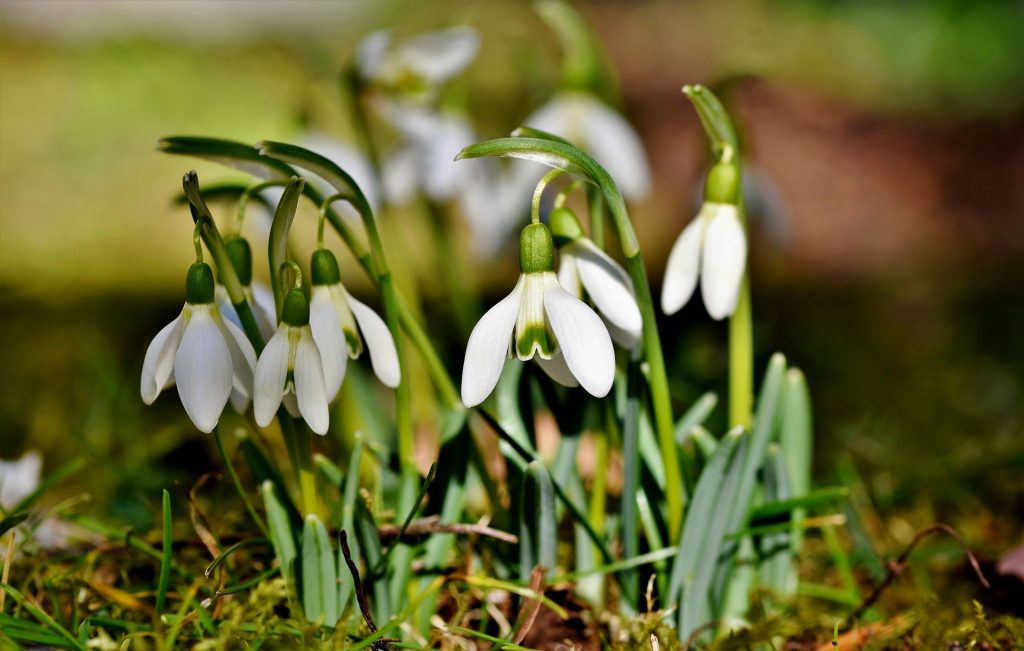
Continuing the theme of our last blog post, the second half of the spring term holds many opportunities for children to experience the awe and wonder of the natural world, even though the weather is unpredictable during the next few months.
PSTT Fellow and Area Mentor Michele Grimshaw reveals her passion for exploration in spring as she considers activities that are really easy to undertake with children, focusing on the changes that will occur in the natural environment over the next few weeks and months…
During school closures and lockdown restrictions, most of us have become more familiar with our local environment. The onset of spring and the changing scenery provides a welcome boost to our spirits and both mental and physical wellbeing.
Going for a walk in a local environment provides the perfect chance to talk about seasonal change. If you have been walking in the same area with children during autumn and winter, use this time to compare and contrast the changing landscape.
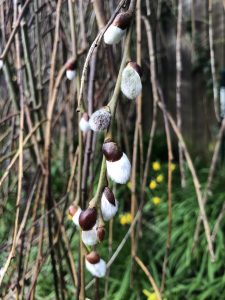 Lengthening day triggers bud production in the trees that have been dormant since autumn. You may be able to see hazel and pussy willow catkins from early February. This early development is because their pollen is carried by the wind and they need to appear before the leaves on trees develop. This enables the pollen to travel further. Cherry blossom is also one of the early signs that spring is on its way. One of the first signs of the changing season is the emergence of spring bulbs, such as snowdrops, crocuses and daffodils. Take a magnifying glass with you on your walk and have a really good look at the flowers.
Lengthening day triggers bud production in the trees that have been dormant since autumn. You may be able to see hazel and pussy willow catkins from early February. This early development is because their pollen is carried by the wind and they need to appear before the leaves on trees develop. This enables the pollen to travel further. Cherry blossom is also one of the early signs that spring is on its way. One of the first signs of the changing season is the emergence of spring bulbs, such as snowdrops, crocuses and daffodils. Take a magnifying glass with you on your walk and have a really good look at the flowers.
You can start some growing projects now that will have quick results. Cress is always a favourite, especially as you can eat the results. I remember, as a child, growing a carrot top. All you need is to cut the carrot about 2.5cm from the top and to place the carrot top on a plate, adding enough warm water to come half way up the carrot. Place this on a windowsill for maximum light and remember to keep the water topped up. After a few days, the carrot will start to sprout and eventually produce feathery leaves. It is important to note that the plant won’t produce carrots but it should flower and produce seeds that can be then planted next year.
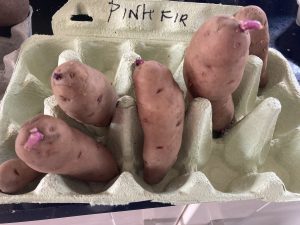 For anyone wanting to try their hand at growing potatoes, now it the time to get them ‘chitting’. This is the process of encouraging the seed potatoes to sprout shoots. Stand potato tubers with the blunt end uppermost in trays or old egg boxes, with plenty of natural light. The potatoes are ready to be planted out when the shoots are 1.5-2.5cm long. If you don’t have a lot of space, potatoes can be grown in containers or even old compost bags!
For anyone wanting to try their hand at growing potatoes, now it the time to get them ‘chitting’. This is the process of encouraging the seed potatoes to sprout shoots. Stand potato tubers with the blunt end uppermost in trays or old egg boxes, with plenty of natural light. The potatoes are ready to be planted out when the shoots are 1.5-2.5cm long. If you don’t have a lot of space, potatoes can be grown in containers or even old compost bags!
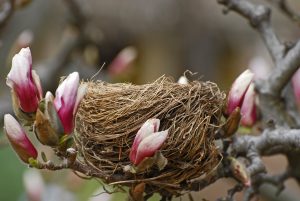 The change in birds’ behaviour becomes more obvious now. You will notice that they are starting to sing much earlier in the morning and later in the evening. If you stop and pause whist out on a walk, you will see clear signs of nest building. Magpies can be seen breaking twigs from shrubs to use for their nest construction. Blackbirds will start to gather plant material to build their nests and you can help them by leaving hair from your hairbrush or even any dog and cat fur you collect after grooming.
The change in birds’ behaviour becomes more obvious now. You will notice that they are starting to sing much earlier in the morning and later in the evening. If you stop and pause whist out on a walk, you will see clear signs of nest building. Magpies can be seen breaking twigs from shrubs to use for their nest construction. Blackbirds will start to gather plant material to build their nests and you can help them by leaving hair from your hairbrush or even any dog and cat fur you collect after grooming.
Birds such as rooks are the ‘early birds’ in the nest building business. It is amazing to watch the development of their nests in the still bare trees. A good idea is to take a photograph each day to see how it is progressing.
Below is a link to a fun activity where children make their own bird’s nest.
https://kidscraftroom.com/make-a-birds-nest-steam-project/
Birds start their courtship rituals and you may see pairs of birds feeding each other and performing lots of wing fluttering in order to attract a mate. Some birds develop brighter plumage too.
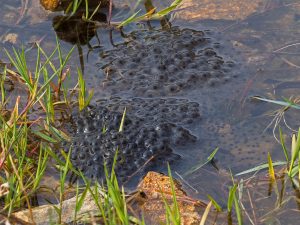 For me, one of the most exciting signs of spring is the appearance of frogspawn in my pond. I am still transfixed to see those tiny black dots developing into wriggling tadpoles, then the metamorphosis from tadpole to froglet. You could keep some frogspawn in a tank for closer observation. Here is a guide on how to look after it.
For me, one of the most exciting signs of spring is the appearance of frogspawn in my pond. I am still transfixed to see those tiny black dots developing into wriggling tadpoles, then the metamorphosis from tadpole to froglet. You could keep some frogspawn in a tank for closer observation. Here is a guide on how to look after it.
https://www.discoverwildlife.com/how-to/watch-wildlife/how-to-rear-froglets/
Seasonal change doesn’t just apply to the daytime – the night sky offers lots of potential for inspiring awe and wonder in children (and adults too!)
Wrap up warm and lie back to look at the stars. The constellations that are easily spotted during spring are Ursa Major, Virgo, Leo and Perseus. You may be able to see the planet Mars in the evening. In April, you will get the chance to view Mercury and Venus.
You can check the different constellations and planets you can see each month here:
https://astronomynow.com/uk-sky-chart/
The past year has been filled with many challenges. Having time to reflect and engage with nature has been a highlight and a source of solace for me and for many others. Spring is a time of excitement and transformation and as Einstein once said:
‘There are only two ways to live your life. One is as though nothing is a miracle. The other is as though everything is a miracle.’
Back to blog



 QUICK
QUICK
 MEDIUM
MEDIUM LONG
LONG



